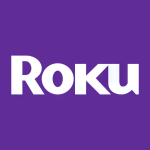Company Description
Overview of Roku, Inc.
Roku, Inc. is a transformative company in the digital media and entertainment sector that pioneered streaming for TV and revolutionized how people access content. With its cornerstone offering, the Roku OS, the company delivers an exceptional streaming platform that provides a best-in-class user experience underpinned by advanced software and robust content integration. Industry-specific keywords such as streaming, operating system, and licensing are embedded throughout its ecosystem, emphasizing its innovative approach and commitment to transforming traditional TV consumption.
Core Business and Revenue Streams
At its core, Roku operates across three primary business areas:
- Streaming Devices: Roku manufactures and sells streaming players and smart TVs, which provide consumers with a seamless means of engaging with digital content.
- Licensing and OEM Partnerships: By licensing the Roku OS to television manufacturers and set-top box producers, the company extends its footprint globally, ensuring that its advanced, software-driven user experience is available in a wide range of hardware.
- Platform Advertising: Roku not only facilitates content delivery but also offers a platform for advertisers, enabling integrated, interactive ad solutions that connect brands with a large and engaged streaming audience. This multi-faceted approach to revenue generation highlights its role in the evolving digital advertising space.
Market Position and Business Model
Roku is positioned as a key player within the streaming industry, converting television viewing into an immersive, on-demand digital experience. Through its proprietary operating system, Roku brings together a diverse array of content publishers and advertisers, fostering a unique ecosystem that spans retail sales, licensing agreements, and advertising partnerships. The company focuses on enhancing the consumer experience on smart TVs and streaming devices, a business model that integrates content consumption with sophisticated advertising and promotional opportunities.
Key Components of the Roku Ecosystem
The Roku ecosystem is built on several interrelated elements:
- Roku OS: Developed from the ground up, this proprietary operating system is the heart of the platform, offering intuitive navigation, rapid content discovery, and tailored recommendations to users. It is a critical asset in differentiating Roku's products from traditional TV interfaces.
- Content Aggregation: Through The Roku Channel and integrations with various streaming platforms, Roku curates an extensive range of free and subscription-based content. This strategy ensures a rich selection of programming that appeals to diverse audience segments.
- Advertising Innovation: Leveraging advanced data analytics, Roku offers targeted and interactive advertising solutions. This enables advertisers to efficiently connect with their target demographics while enhancing the overall viewing experience for users by integrating interactive, shoppable ad formats directly into the streaming interface.
Industry Impact and Competitive Landscape
Roku has firmly established itself within the competitive digital media landscape. Its early adoption and continuous innovation in streaming technology place it ahead in a market where traditional TV consumption is increasingly replaced by digital alternatives. While facing competition from other streaming and content platforms, Roku’s integrated approach of combining hardware sales, licensing, and dynamic advertising capabilities provides it with a unique competitive advantage. Its emphasis on delivering a superior user experience through a software-based platform further differentiates it from companies that rely solely on content distribution or hardware sales.
Expertise and Technological Innovation
Roku employs top-tier talent across domains such as software engineering, advertising, marketing, and data analytics. The company’s focus on continuous innovation is evident in its iterative improvements and feature enhancements on the Roku OS. This commitment to technological advancement not only drives superior performance in its devices but also supports its strategic initiatives in interactive media and personalized content delivery. The detailed engineering behind its system enables precise data insights that are used to optimize content promotion and advertising effectiveness.
Importance in the Streaming Era
As consumer preferences shift towards on-demand and streamed content, Roku’s comprehensive platform serves as an essential bridge between traditional television and modern digital viewing trends. It addresses the evolving needs of viewers who demand flexibility, immediate content access, and personalized viewing experiences. Moreover, its collaborative relationships with content creators, advertisers, and retailers underscore how essential its platform has become in the contemporary media landscape.
Conclusion
In summary, Roku, Inc. stands out as an innovator in the streaming and digital advertising space. Its robust ecosystem, anchored by the Roku OS, integrates diverse revenue channels including device sales, licensing, and advertising. This multi-layered approach not only enhances the viewer experience but also builds a resilient business model positioned within a rapidly evolving industry. The company provides comprehensive solutions that connect consumers with their desired content and enable advertisers to deliver highly engaging, interactive ad experiences. Overall, Roku remains a pivotal component of the digital transformation of television, continuously adapting to meet the demands of modern content consumption.

